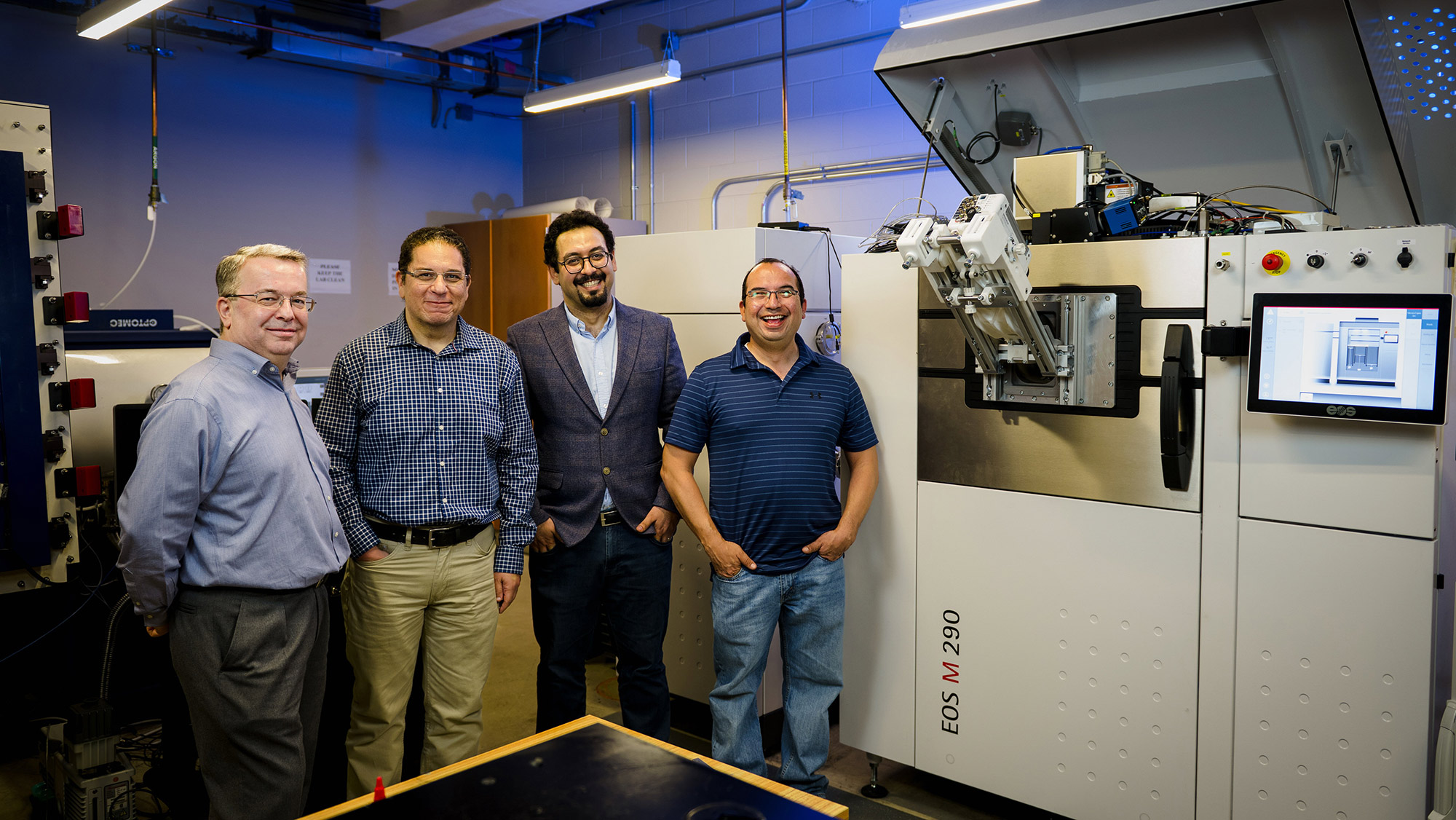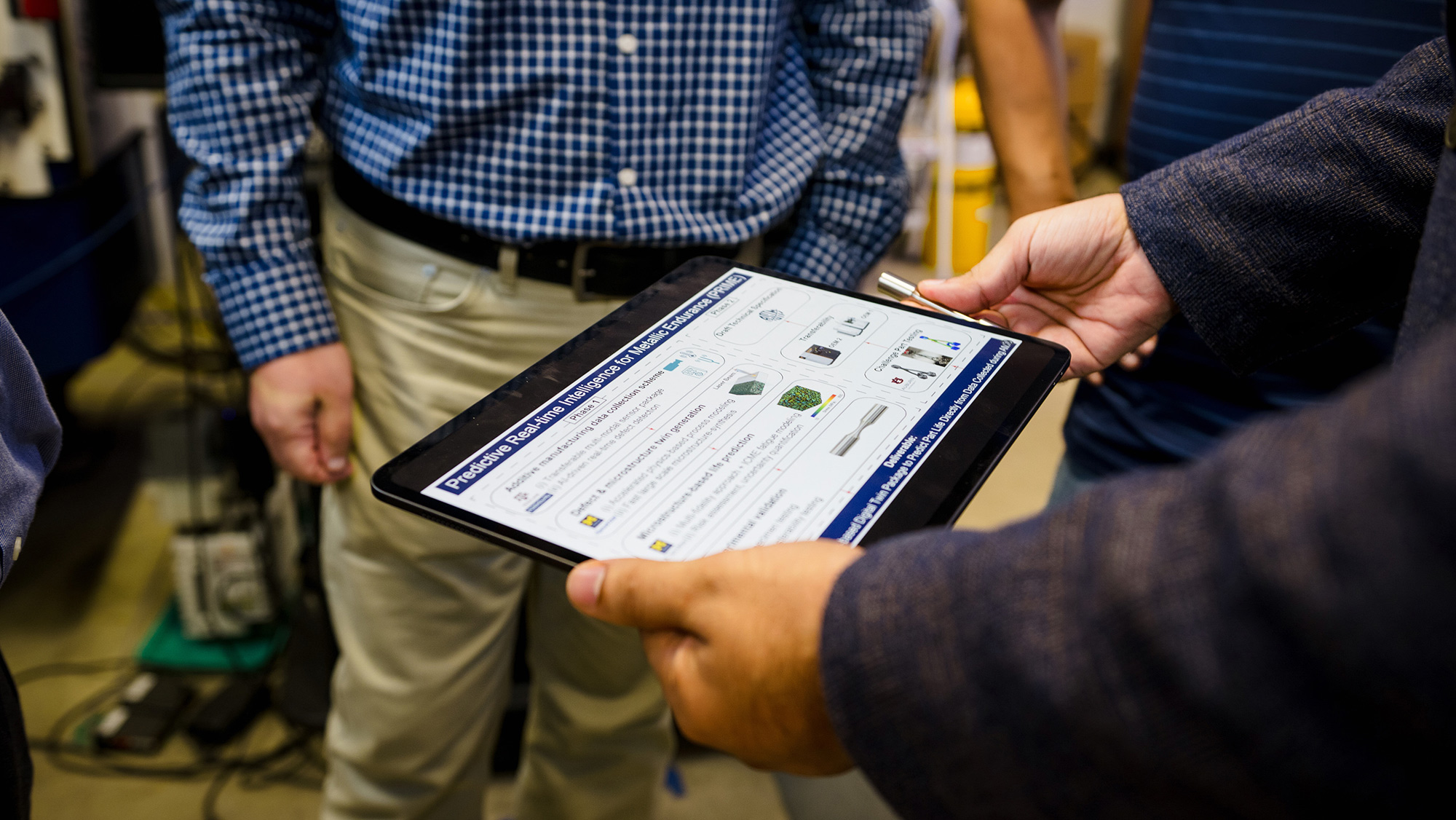
At present, it takes an average of 18 months for a supercomputer to evaluate a single 3D part and accurately predict its lifespan or expected date of failure. The Defense Advanced Research Projects Agency (DARPA)’s Structures Uniquely Resolved to Guarantee Endurance (SURGE) program has tasked grantees with compressing this evaluation time to three days and significantly simplifying the process so that it can be performed on a laptop computer.
Four members of the Texas A&M University faculty have responded to that challenge. They will receive $1.6 million in DARPA funds to create a system for rapidly accelerating the process that determines the quality and expected lifespan of 3D-printed components used by the military.
This new approach to predicting lifespan will increase the speed at which parts are made and deployed in critical applications and accelerate the adoption of additive manufacturing technologies in the form of more 3D printers at Department of Defense (DOD) bases. It will also provide millions of dollars in savings for the DOD.
If adopted, the team’s proposed approach will impact the entire additive manufacturing industry and make Texas A&M a key player in that transformation.
“This is an exciting moment for the additive manufacturing field, a community that increasingly recognizes the urgent need to accelerate the qualification of 3D-printed parts,” said Dr. Mosen Taheri Andani, assistant professor of mechanical engineering at Texas A&M and a member of the grant team. “By integrating in-situ data with the underlying microstructural features formed during printing, the program will bridge expertise in process monitoring, microstructure characterization, and property evaluation – paving the way for faster, more reliable deployment of additive-manufactured parts.”

Andani will work with Texas A&M faculty Dr. Raymundo Arróyave, Chevron Professor (II) of materials science and engineering; Dr. Aala Elwany, professor of industrial and systems engineering; and Dr. Ibrahim Karaman, Chevron Professor and head of the department of materials science and engineering, Drs. Taheri Andani and Elwany are materials science and engineering affiliated faculty.
Prior to the advent of additive manufacturing, the evaluation of metal components was based largely on the specific machine or manufacturing process used to produce the parts. However, with 3D-printed parts, each part exhibits its own unique signature of microscopic features or defects, varying in location and size even among parts printed on the same machine and using the same batch of raw feedstock. These defects, while currently unavoidable, play a critical role in determining the rate at which a part may ultimately fail.
The certification process for these parts is both time-consuming and costly.
“Accelerating the certification of metal additive manufacturing parts is extremely challenging,” Andani said. “Our team at Texas A&M is proud to contribute to this effort and help solve a challenge that is vital to advancing national capabilities.”
The Texas A&M award is part of a larger $10.3 million, four-year grant shared with collaborators at the University of Michigan; Auburn University; the University of California, San Diego; ASTM International; and industry partners Addiguru and AlphaStar.
The key metrics for success on this project are speed and accuracy – a combination that makes the project particularly demanding, Andani explained.
The Texas A&M team will work with Addiguru during the first two-year phase of the grant to develop a sensor package that can be installed directly into a commercial additive-manufacturing platform to monitor the printing process by capturing real-time information from multiple sensor modalities. Once the sensor system is perfected, the team will develop an AI-driven, high-resolution defect-detection system capable of reading, combining, and processing data from heterogeneous sensor sources. In parallel, Texas A&M will coordinate with the University of Michigan team, the company AlphaSTAR and ASTM International to accelerate the prediction of microstructural features generated during the additive manufacturing process.
“This DARPA project is particularly exciting for us because it represents a unique opportunity to address one of the most critical challenges facing the field today. We are confident that this work will have a transformative impact on industry and help unlock the full potential of additive manufacturing at scale,” said Karaman.
Funding for this research is administered by the Texas A&M Engineering Experiment Station (TEES), the official research agency for Texas A&M Engineering.